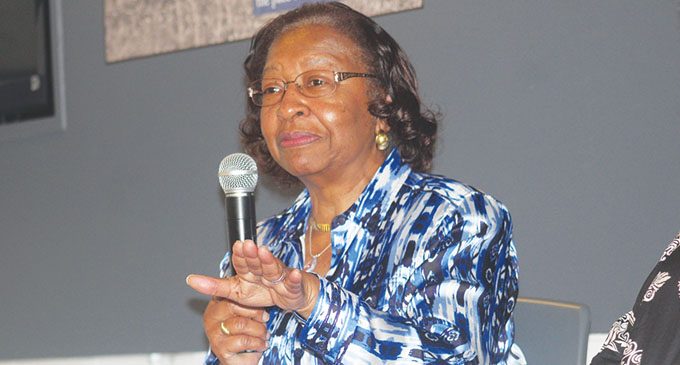Teachers, students discuss history of integration in WS/FCS
Retired teacher and educator Daisy Chambers talks about what life was like at Clemmons Elementary School in 1964.

Last week, more than 60 years since the landmark decision in Brown v. Board of Education, former educators and students sat down to talk about what life was like following the desegregation of schools here in Winston-Salem and Forsyth County and the current state of public education.
Three years after the federal mandate which outlawed separate but equal public schools across the nation, Gwendolyn Bailey became the first black student to attend R.J. Reynolds High School in the fall of 1957. Bailey’s arrival at Reynolds that fall marked the end of law-enforced separation at all schools and shaped the face of the city.
However, well into the 1970s, many black students continued to attend primarily black schools and white students continued to attend primarily white schools.
During the panel discussion titled “Civil Rights Activism in Winston-Salem: School Integration,” retired teacher and educator Daisy Chambers said in 1964 when she was called on to integrate the faculty at Clemmons Elementary School, she didn’t want to go.
“To me, Clemmons was in another world,” she said. “Although I had confidence in my teaching skills, it was somewhere I didn’t want to go.”
Chambers mentioned although there were parents and students who questioned her ability at first, soon after the color of her skin became an afterthought. She said the school’s principal at the time, Frank Morgan, made the transition easy by welcoming her to the staff during the first staff meeting. Chambers said, “He stood up told everyone, ‘Integration is here to stay.’
“If you are not for integration, let me know and I will help you find somewhere to go.
“I knew I was African-American, but I didn’t feel like I stood out and Frank Morgan played a major part in that,” Chambers noted.
While Chambers’ transition seemed seamless, life in an integrated school system was not as easy for Norma Corley.
In 1958, Corley was one of three students assigned to integrate the formerly all-white Easton Elementary School. Corely said although she was taught to treat everyone with dignity and respect, many of her classmates were not taught the same lessons at home.
“It was very had at times,” she continued. “Everything was so new and we didn’t have a manual, so we had to deal with it the best we could.”
When asked about the relationships she had with other students, Corley said although she made friends with some white classmates, outside of school they were not even allowed to talk to each other.
“We had the experience of being friends in school, but outside those walls we didn’t know each other,” she said. “That was normal back then.”
Assistant superintendent for instructional and student services Kenneth Simington, who was a student in the WS/FCS System in the 60s and 70s, was part of the panel as well. While thinking back to his childhood, Simington said he didn’t see many black and white students communicate with each other until he began to play sports.
“When I started to play sports in high school is when I really began to see students begin to interact,” Simington said.
While school integration can be considered a success because it got black and whites students in the classroom together, the benefits and pitfalls are often debated. When asked about the success of desegregation, Corley quickly answered, “I don’t believe it works.
“The ideal integration to me would be sharing and valuing everything someone brings to the table. That’s not what happens,” she said. “We still have a double standard; everybody knows this.
“Our school system is resegregated again, so to me it’s a failure.”
Chambers echoed Corley’s statements. “Where we stand today, it has not been successful. It has never been successful.”
Dr. Simington said like others across the country, the local school system is faced with the challenge of integrating schools without using buses because of a federal mandate. According to Simington, the law states school systems could no longer use buses to integrate.
“We have to seek plans that seek integration without using buses,” he said. “Now we have a plan that attracts students to schools across the county and students have the choice to do that.”















